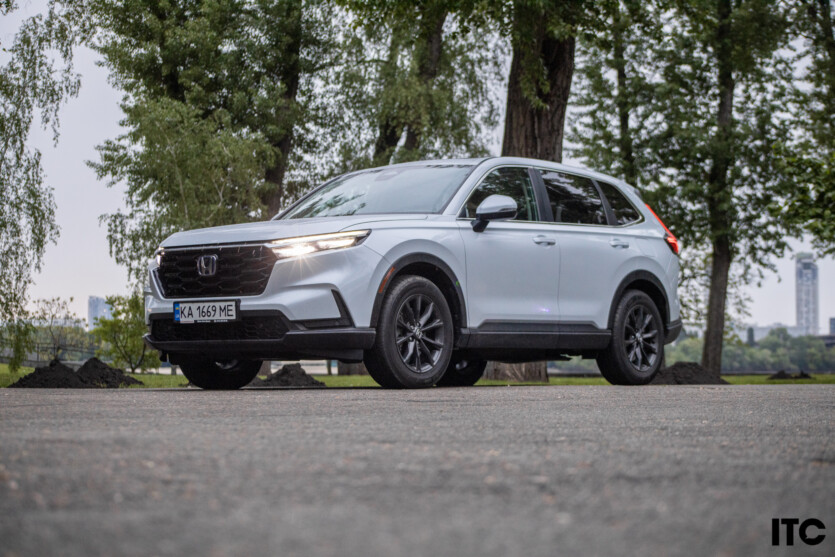
Major updates do not go unnoticed, and in our case there are even more of them than we expected. The iconic Honda CR-V family crossover has not only changed its appearance, but has also been deeply upgraded in all major systems, leaving the usual reliability, practicality, and charm.
Still, it has a slightly different charm. The sixth generation CR-V has changed quite radically, not only externally and internally, but also technically. It is good that this did not affect the character of the crossover. It remains true to the philosophy that it has carried through the years. And in 2025, we get a small bonus in the form of an ukrainianized menu, fresh packages with an expanded list of security systems, and access to a mono-drive version.
The Honda CR-V first appeared in 1995 and immediately set the pace for the development of family SUVs along with the Toyota RAV4. It has always stood out from its closest rival with its precise handling, driving ability, combined with the practicality of a spacious interior, reliable units, and calculated ergonomics. They are still competing for consumer love, and now also for the efficiency of hybrid systems.
Content
Fresh changes in favor of
So, until now, only all-wheel drive versions of the Honda CR-V in the Elegance trim, as in our test car, were available in Ukraine. Now we’ve added Elegance+ and Advance, which have a cross-traffic warning system, lane change assist, heated steering wheel, and the top model will also have a projection display, seat memory and ventilation, and adaptive high beams.
However, even our base version has enough features to reach the level of the top-of-the-line RAV4 and compete with it. Especially in design. In my opinion, it is so utilized that it can attract even conservatives. Someone finds the outlines of a Volvo in the new appearance, someone compares the CR-V to a Mitsubishi, and someone reminds it of a VW Tiguan. Only upon closer inspection do you realize the originality of this crossover.
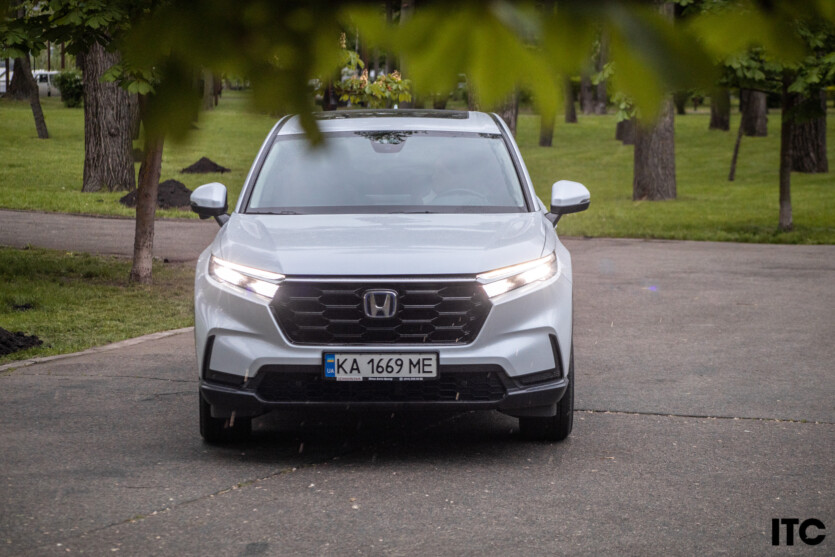
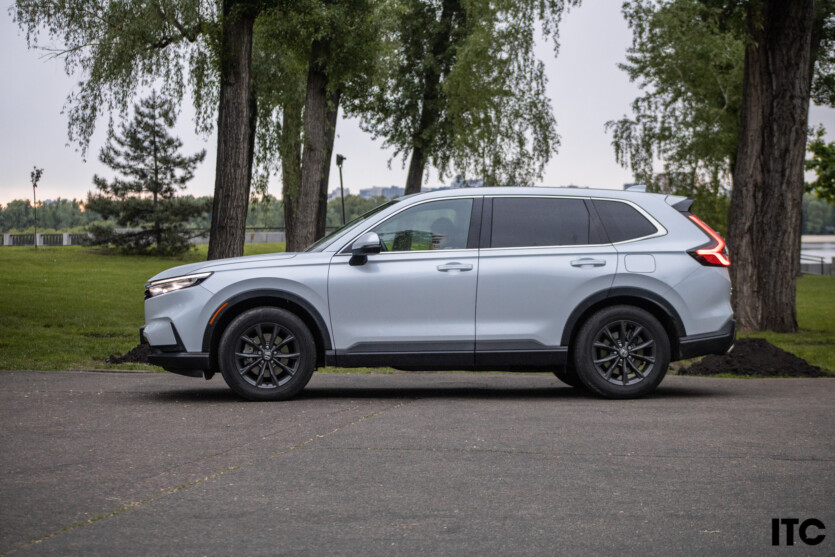
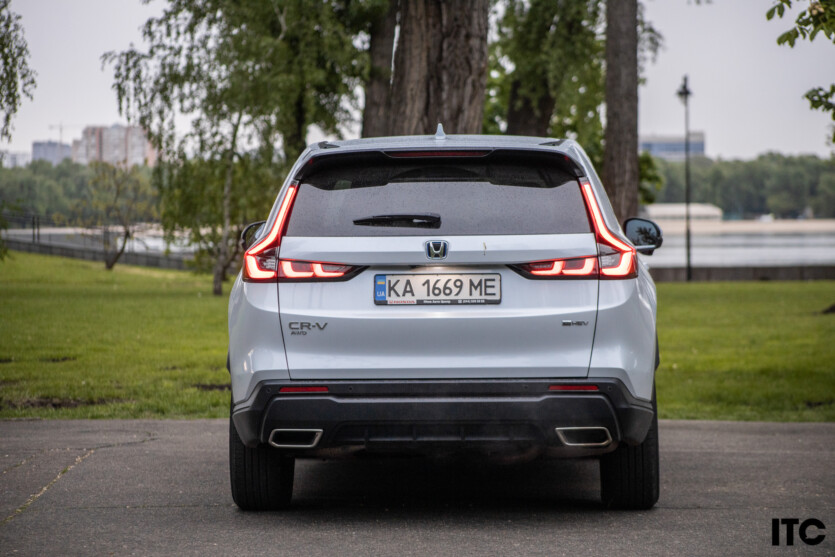
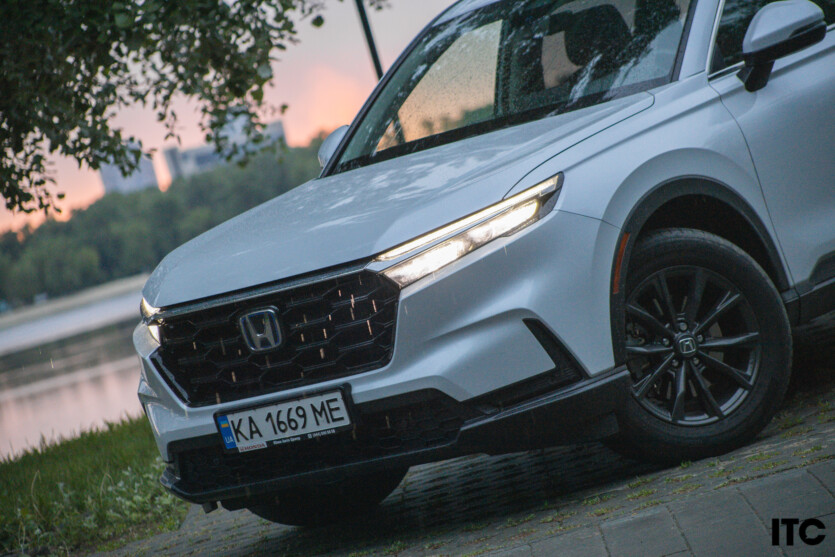
In the 2023 Honda CR-V, the body has grown in length, width and height, but not at the expense of ground clearance, which remains at 194 mm. The optics are different here: the new car has fully LED headlights, a bright diode turn signal strip integrated into the parking lights, and a false exhaust tailpipe at the rear as a reminder of the brand’s driving performance.
It seems that it has been given restraint, modesty and earthiness, less space, more minimalism. It looks modern, but next to the futuristic Hyundai and Kia, it looks like an amateur boxer in a professional ring. The fresh Tiguan stands out even more on the road. However, Honda has never chased trends, focusing on technology and handling. And here, fortunately, everything remains in place.
Technological revolution
The proprietary i-MMD system is still as advanced and unsurpassed. Even Toyota’s parallel hybrid will not catch up, although Nissan with its e-Power is close in terms of performance and efficiency, and in some ways even overtakes them. The X-Trail today has even more power than the Honda, of course, and the dynamics here are much more indicative, and fuel consumption remains at the same level.
Recall that the hybrid system is based on a 2.5 gasoline atmospheric engine with a capacity of 148 hp, which operates on the Atkinson cycle. The electric motor produces 184 hp and 335 Nm of torque, so it provides the main power, accelerating the crossover to 100 km/h in 9.4 seconds together with the ICE. The 1.4 kWh battery allows the car to travel only on electricity, up to a maximum of 11 km.
The new generation Honda CR-V has a lot to brag about. They have even changed the behavior of the rail, not to mention the generator and the hybrid drive scheme. Thanks to the introduction of two gears that operate in the range of up to 80 km/h and from and up to 120 km/h, the gasoline engine can turn the wheels separately from the electric motor. This was not previously available. This further reduces fuel consumption for excessive battery charging. An interesting solution, but will it complicate the system itself and bring surprises in the form of additional costs for the owner? We will find out only later.
Therefore, the hybrid system has more driving modes: on electricity only, on electricity and gasoline, when gasoline charges the battery, when the internal combustion engine turns the wheels. What distinguishes this system from others is that it works at any speed, so even at 120 km/h, the car can drive in EV mode. And the «B» mode in the box adds even stronger regeneration, the strength of which can already be adjusted by the steering wheel paddles. It’s similar to Nissan’s e-Pedal, but not enough to stop the car completely.
The main thing is that the rest of the car remains unchanged. Here, all-wheel drive is still realized by means of a cardan and a clutch, so the mono-drive version will be lighter (1806 kg vs. 1750 kg) and will have minor advantages in the form of slightly lower fuel consumption and better acceleration dynamics. However, with all-wheel drive, we have more confidence in every move, even in bad weather. There is even a «Snow» driving mode, in addition to «Normal», «Sport» and «Eco».
I like driving any Honda model. It’s always a clear steering wheel, a well-balanced suspension, and no unnecessary rolls. Although, along with sensitivity to bumps, bordering on stiffness, it only works out quite elastic and does not allow discomfort to penetrate the cabin thanks to adaptive shock absorbers. But in Nissan it will be even more sensitive even on small bumps, and in Toyota there are more rolls, although more softness. So, with the expectation that the driving here is incredibly satisfying and confident, the driving advantage and driving pleasure are on the side of the CR-V.
A nice bonus here is the fuel consumption, which does not exceed 6.4 liters with fairly aggressive driving. Slow driving in the city allows you to drop to 5.2 liters, so everything will depend on you and your love of quick starts, and it is quite nimble for such dimensions.
The new generation of the Honda CR-V has added fuel to the fire in terms of safety, and now adaptive cruise is almost completely in control of the car. All that’s left is a little bit more — lane keeping, matrix light, which is still missing, and all-round view from cameras, and it will be possible to justify the price of the Honda CR-V, which now starts at 1,996,300 hryvnias ($47,964).
It’s nice that at least the available systems work well together, as the Japanese should. And the camera in the left mirror, which shows the blind spot on the left when changing lanes, is a magical function that saves many lives in many cases of driving in the city and on the highway. You can always force it on with a separate button at the end of the turn signal control lever. It’s a pity that they didn’t make a separate button to turn on the rearview camera, sometimes it’s useful without engaging reverse gear. And the parking sensors show the distance to the bumpers clearly.
The wipers have also been redesigned, now hidden under the hood, and thanks to narrower posts and more glass, visibility has improved, and more light enters the cabin. And there is another convenient feature — mudguards that are integrated into the wipers themselves.
Salon cosmetics
The interior architecture of the Honda CR-V has changed even more, as if it were a different car altogether. Only the styling is restrained and minimalistic, maintaining the exterior. Not in the modern sense of minimalism, when all the functions of controlling systems and settings are given to a large monitor, but in the classic sense. No experiments with strange combinations of materials and colors. The structure is as close as possible to a single style. Everything is soft where your hand touches, and harder plastic is almost indistinguishable. If gloss is used, it’s done so carefully that you don’t get your fingers stained.
The upholstery is made of high-quality leather, even stitching, and a pleasant color. There will be no wow effect here, only quality and simplicity. But you don’t have to get used to anything, everything is where it should be: a separate panel for controlling the dual-zone climate, buttons for switching the box modes, a nearby change of driving modes, and a wireless phone charger with a rubberized base so that the phone doesn’t slip around while driving.
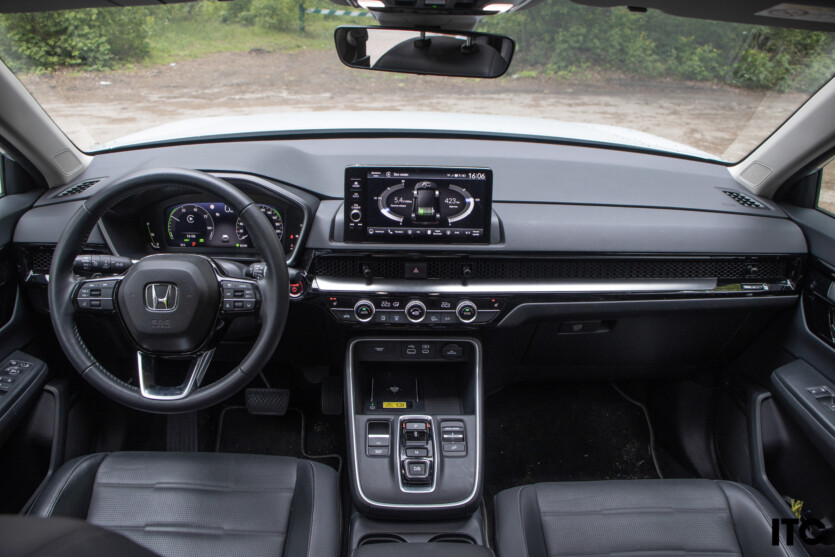
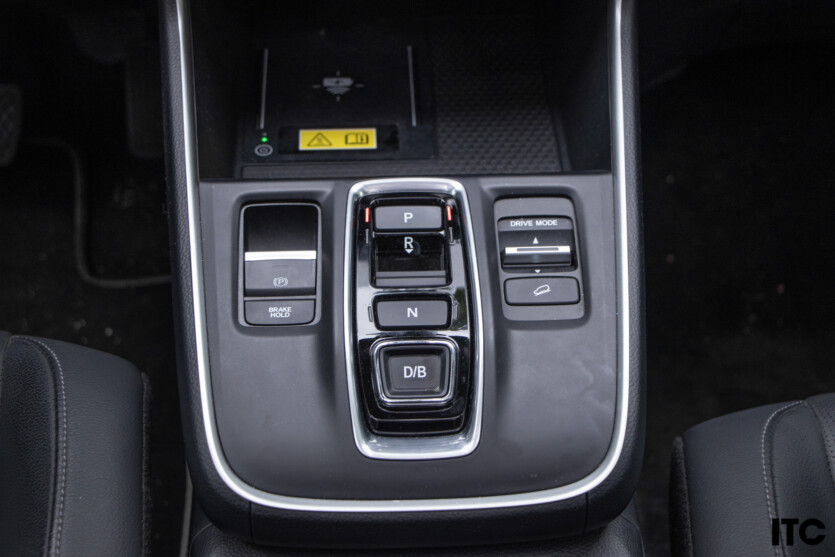
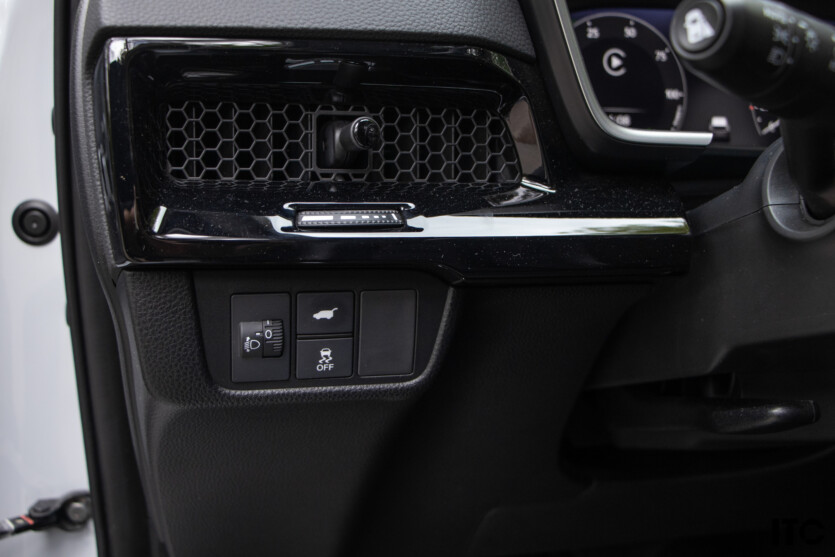
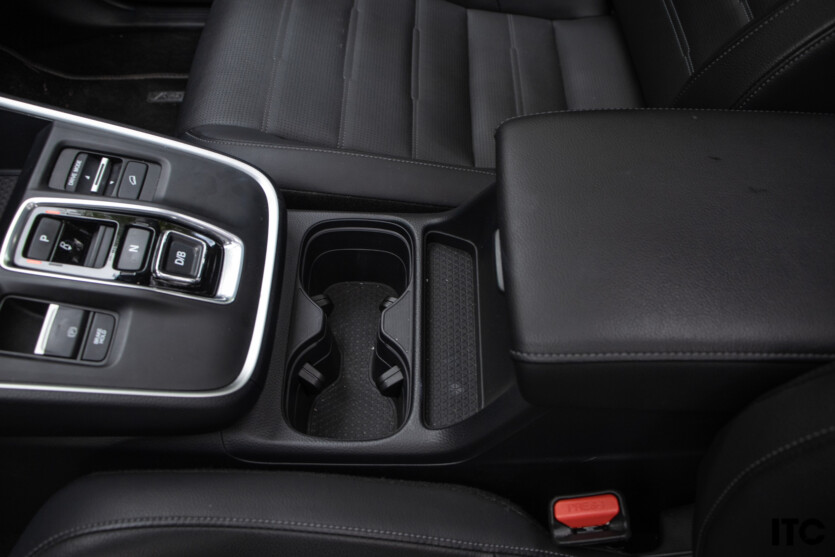
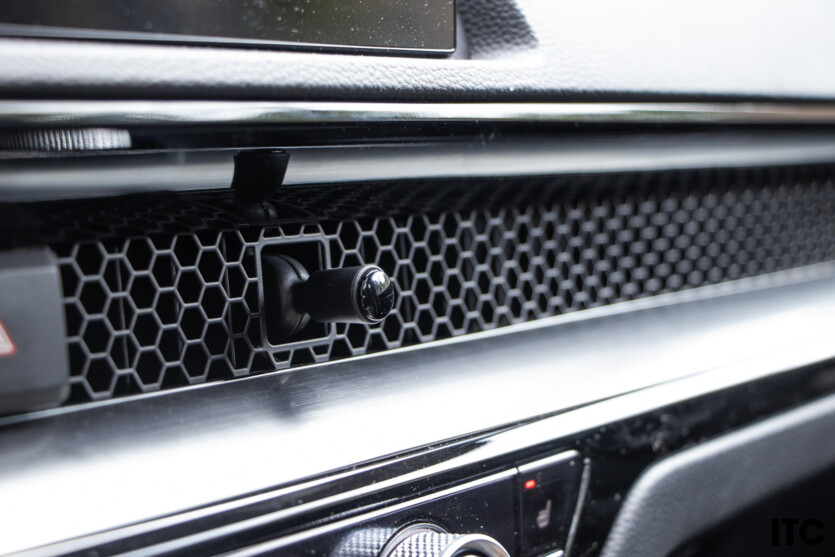
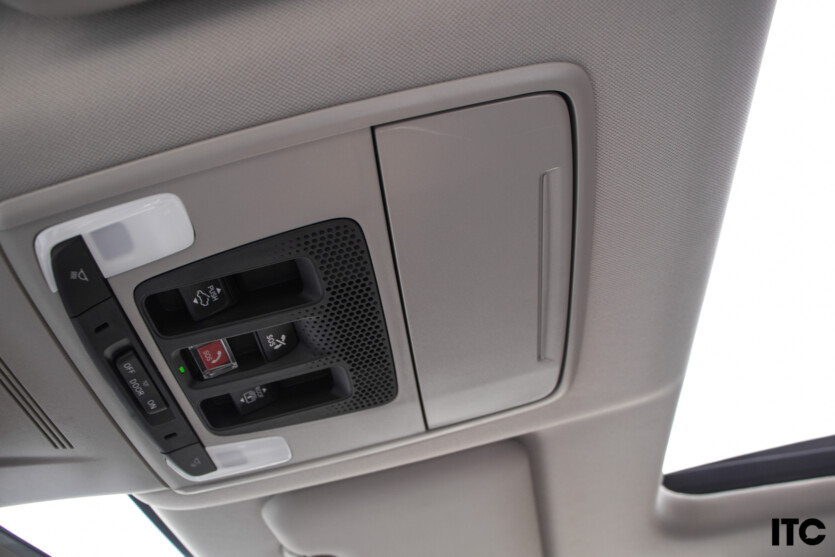
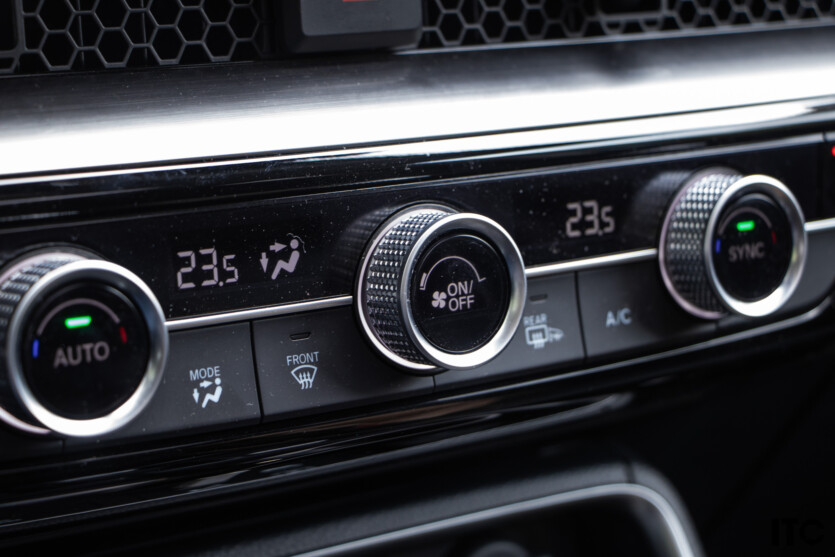
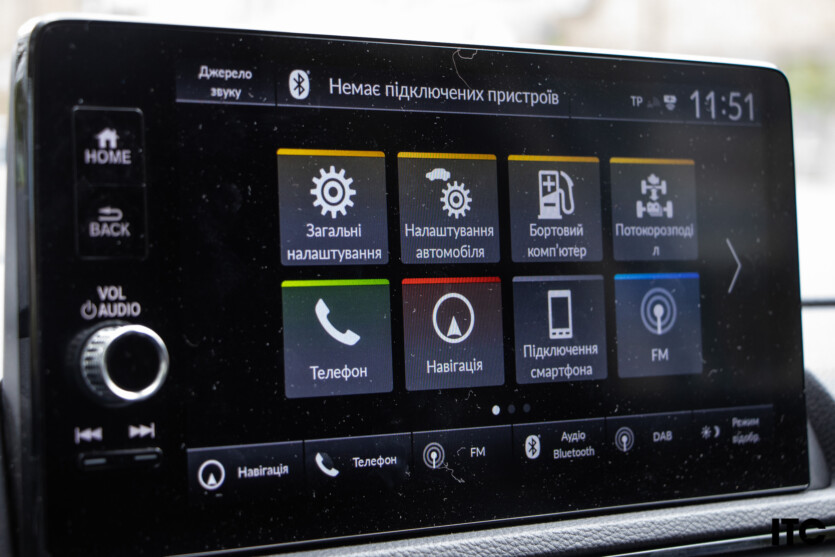
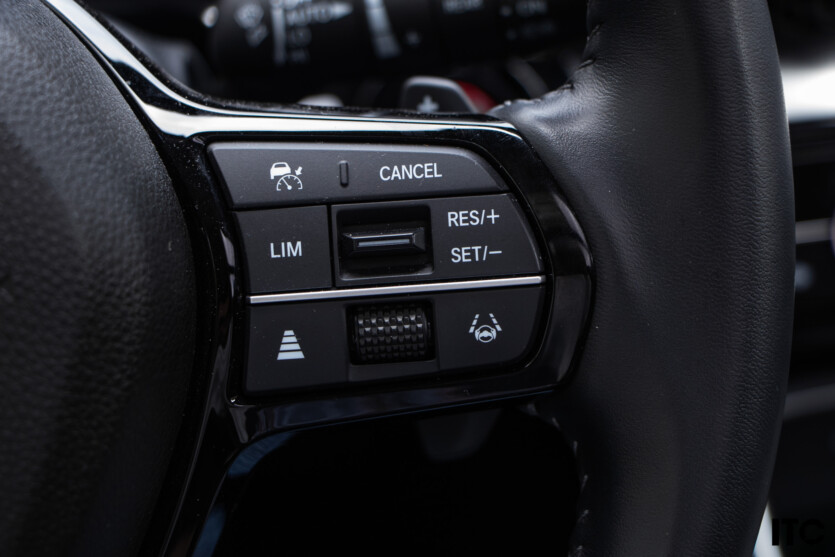
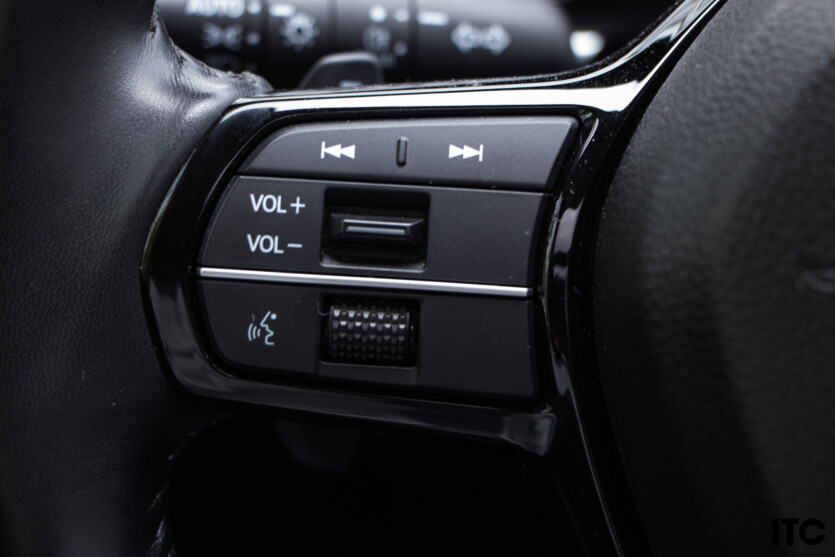
There may not be a need for large displays here, and the dashboard, although digital, has a classic well look and variable information from the on-board computer. The top-of-the-line Advance gets a projection on the windshield, as well as adaptive high beams and cornering lights.
They offer a monitor of only 10.2 inches, which is enough in principle, and the presence of wireless Apple CarPlay makes it much easier to communicate with the system if you have an iPhone. Starting with the basic equipment, there is integrated navigation, as well as eight speakers of the Bose audio system. So the sound is good and the noise from the arches is easily muffled. In general, Honda CR-V was criticized for poor noise insulation. Now the situation has improved, but not by 100% and there is still too much road noise.
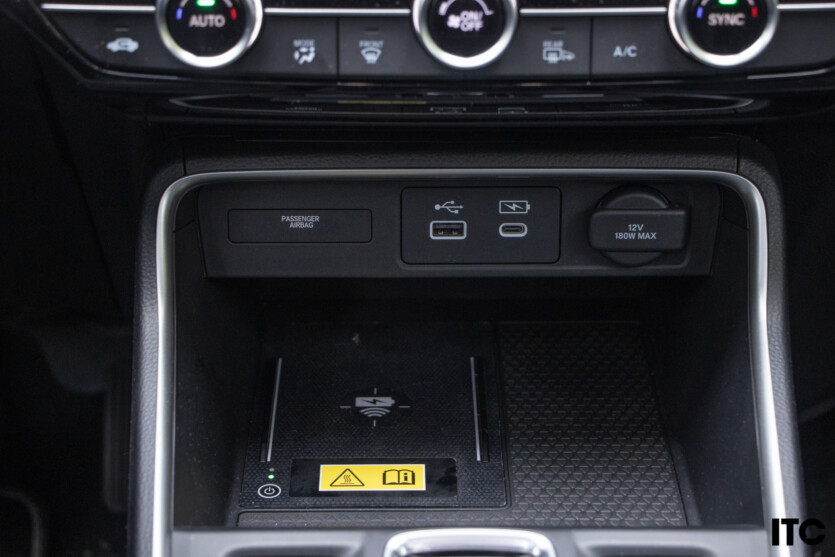 USB and Type-C outputs are side-by-side for convenience, so you don’t have to change cables for charging, and there are separate outputs for rear passengers, as well as air deflectors.
USB and Type-C outputs are side-by-side for convenience, so you don’t have to change cables for charging, and there are separate outputs for rear passengers, as well as air deflectors.
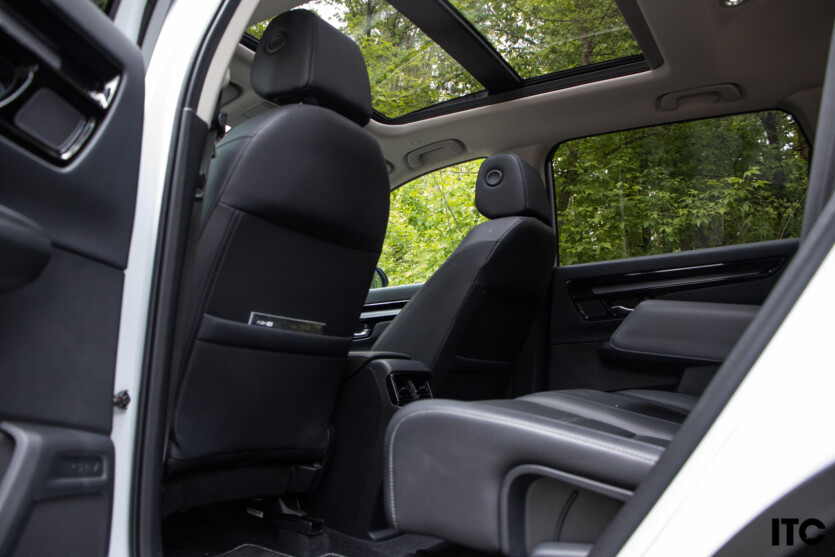
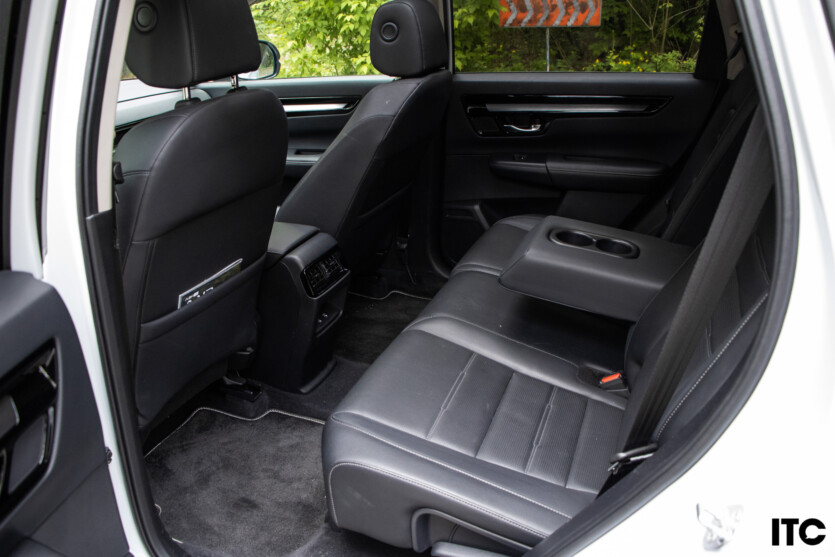
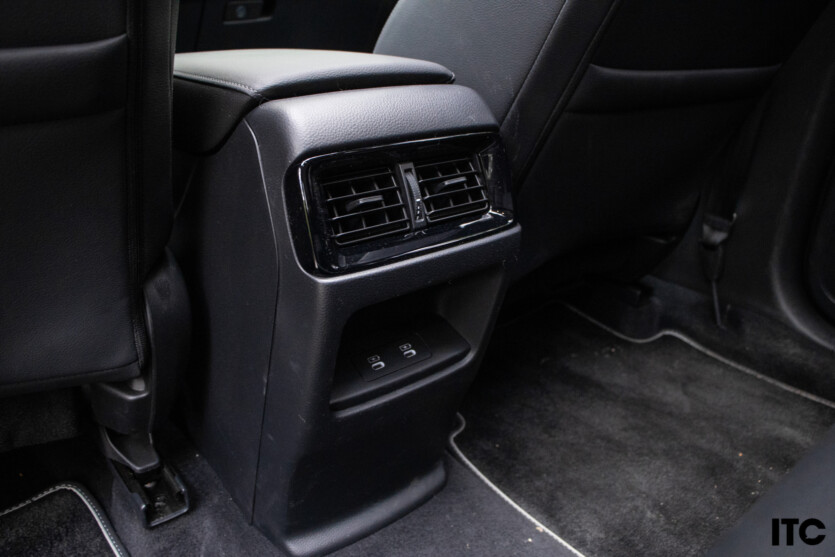
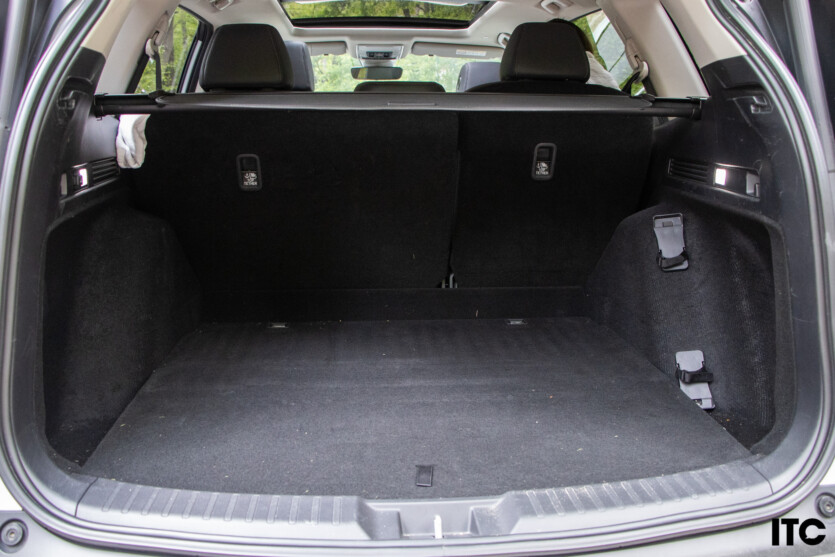
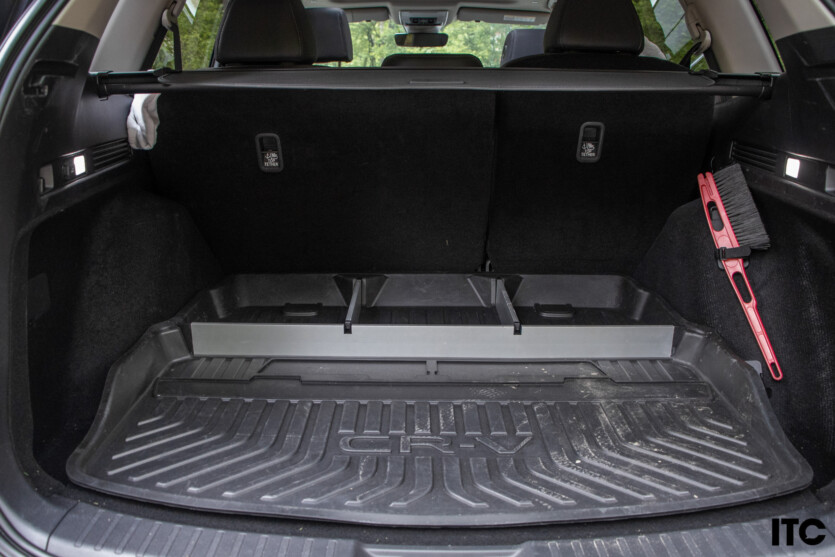
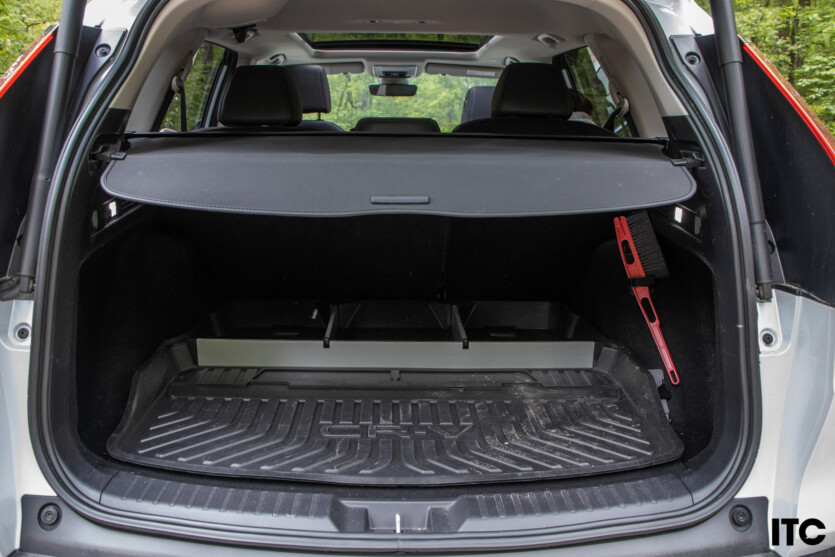
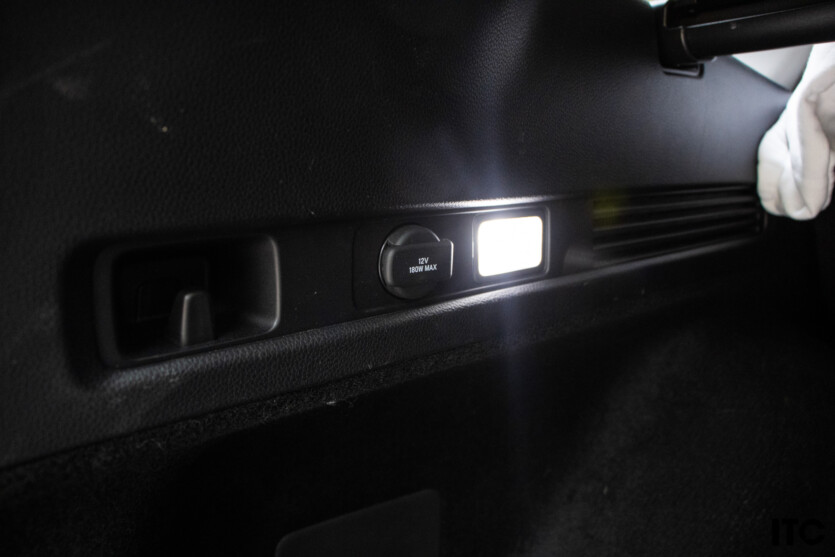

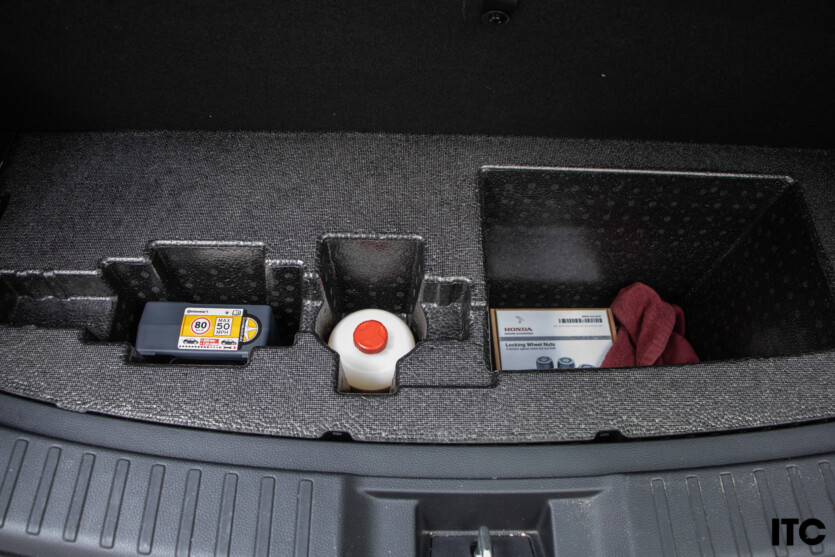
Honda generally has an unrivaled concept of space organization, and the same remains here. There is plenty of room on all sides. Even three long-legged fashion models can sit in the back row. However, the headroom has become much smaller, but not threateningly so. And the trunk is simply a record in this class and offers 587 liters and 1070 liters if you fold the backrests of the rear sofa. There is a 12V outlet, and there are convenient organizers for the necessary tools and liquids under the floor. It’s a high-level of thoughtfulness.
Conclusions and positioning
It’s nice that Honda remains the same as we are used to seeing, but unfortunately, today’s consumers need not just a wow effect, but emotion and impressions. The CR-V gives a little different emotion — confidence, calmness, and measuredness. It has an easy-to-start engine that doesn’t need to be warmed up as much as a conventional internal combustion engine — it just starts and drives. The crossover easily solves all everyday tasks, family tasks, repair and work tasks. People buy such a car for many years and cannot part with it.
It’s good that now we have access to different configurations and drives, which allows us to choose. Still, even the basic Honda CR-V will cost more than the top-end RAV4 (UAH 1,811,940) or will be close to the cost of the top-end Nissan X-Trail (UAH 1,811,940) 2,150,030). However, the top crossover will be pricier than its competitors, so it’s quite difficult for it to compete. Only true fans will understand its value.
PROS: control, ergonomics, spacious interior and luggage compartment, and simple style.
CONS: cost, noise insulation, and a complicated media system.
| Body, type | SUV |
| Dimensions (LxWxH), mm | 4706x2150x1684 |
| Wheelbase, mm | 2700 |
| Declared ground clearance, mm | 194 |
| Trunk volume, liters. | 587/1070/1642 |
| Curb weight, kg | 1806 |
| Engine | 2.0 iMMD |
| Power, hp. | 148 |
| Torque, Nm | 189 |
| EV power, hp. | 184 |
| EV torque, Nm | 335 |
| Li-ion battery, kWh | 1.4 |
| Type of drive | 4WD |
| Pendant | Independent McPherson/multi-lever |
| Transmission | CVT |
| Dynamics 0-100, s | 9,2 |
| Maximum speed, km/h | 187 |
| Fuel consumption, l (mixed) | 6,4 |
| Cost, UAH | from 1 996 300 |
| The cost of the test car, UAH | 2 096 300 |
| Competitors | Toyota RAV4 |
| Nissan X-Trail | |
| VW Tiguan |


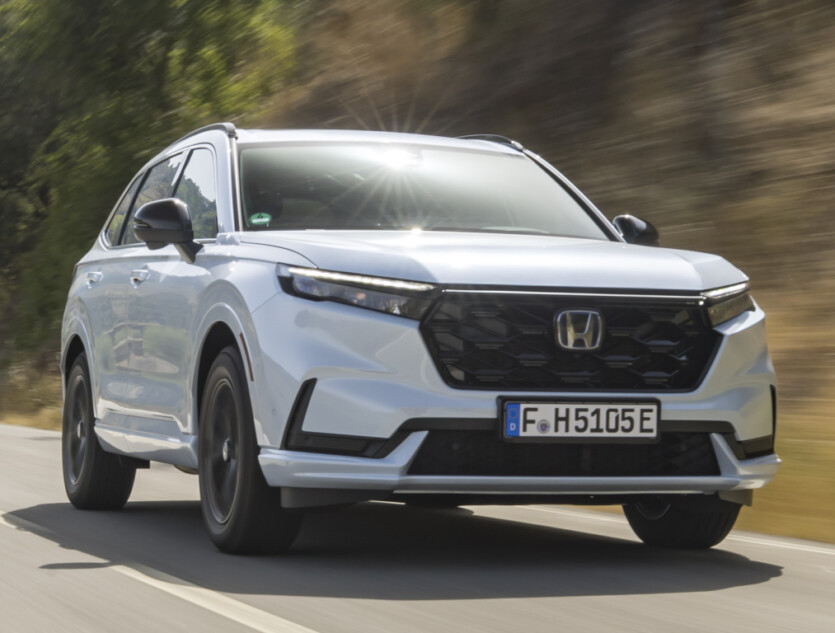
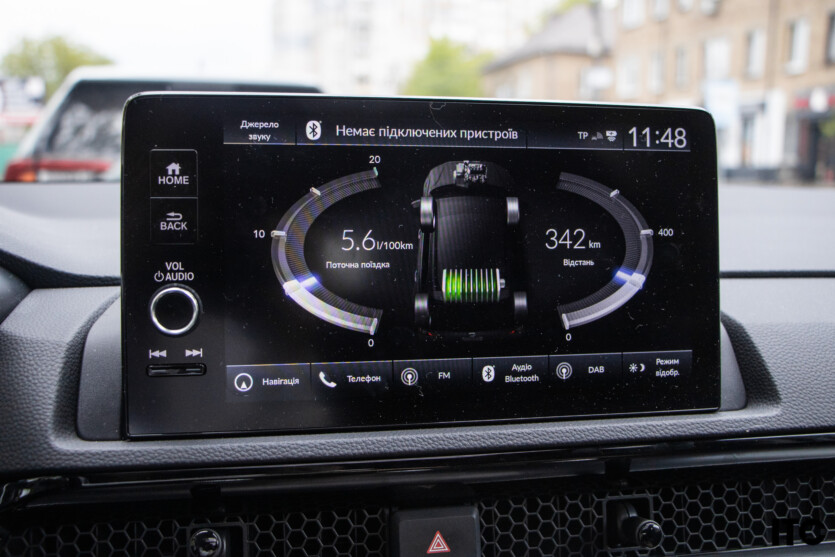
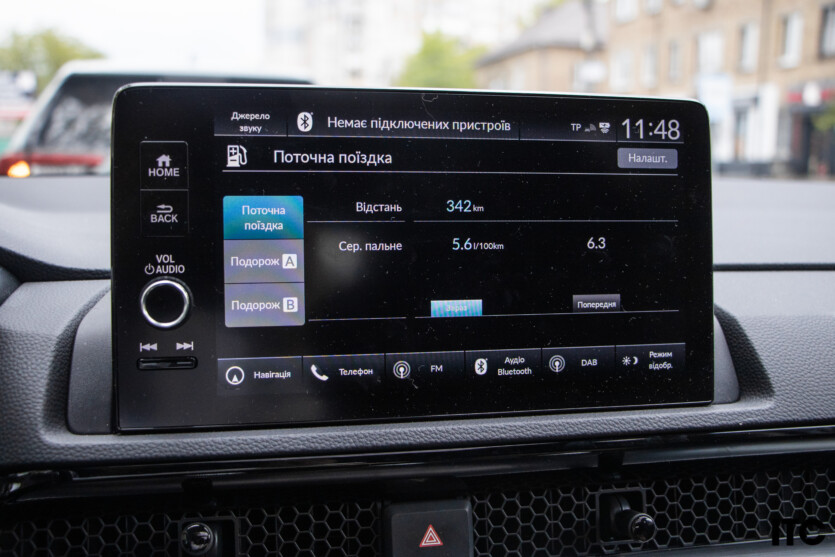
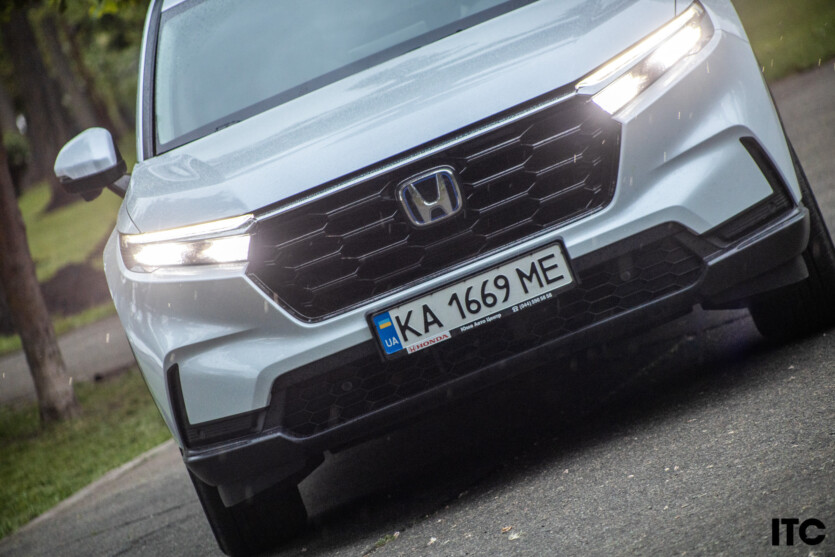
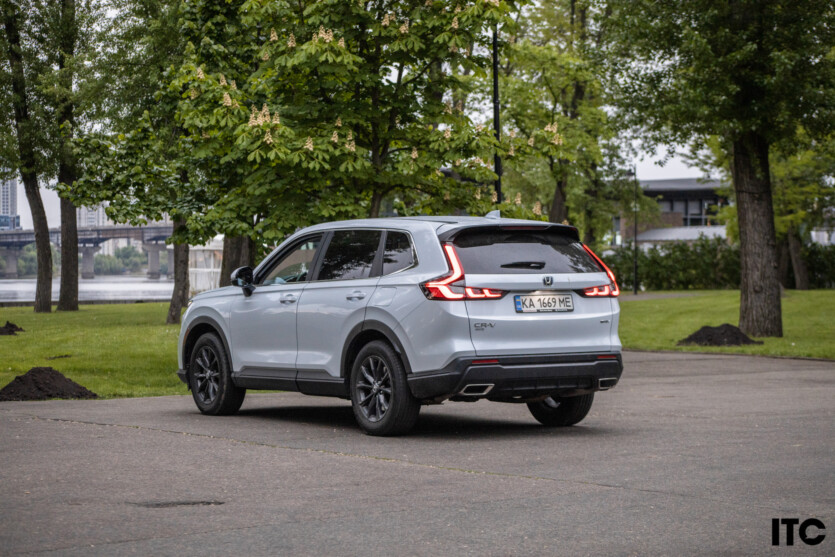
Spelling error report
The following text will be sent to our editors: